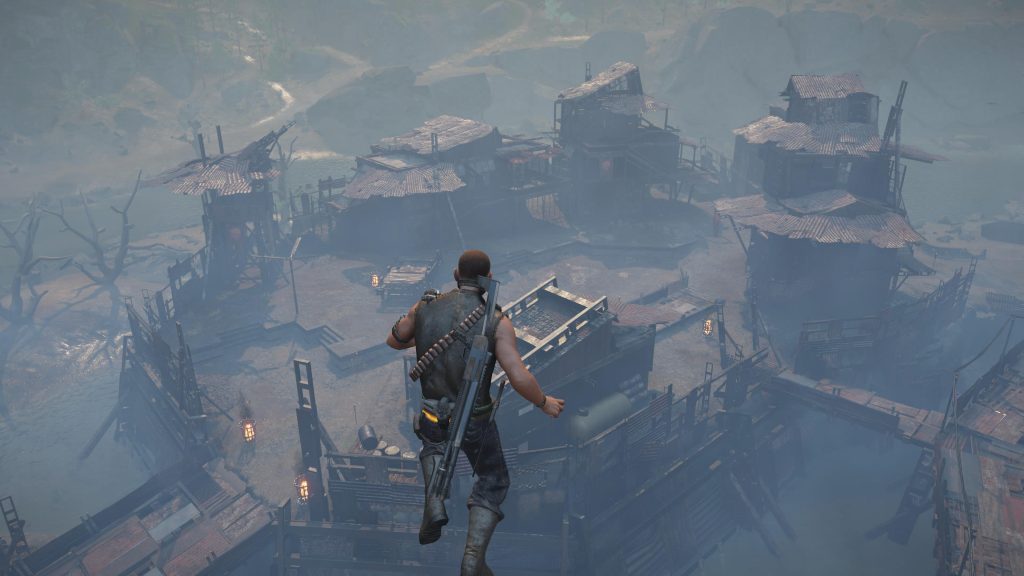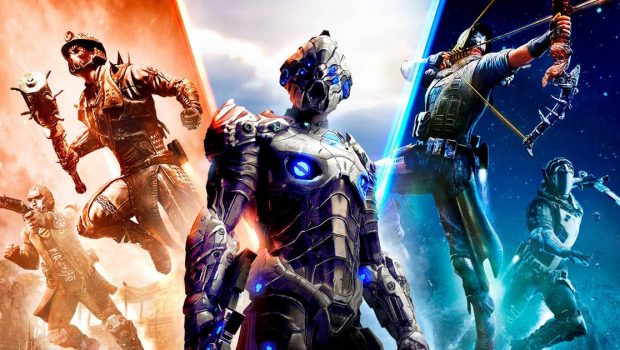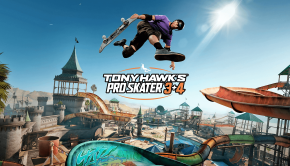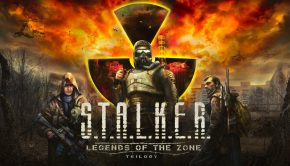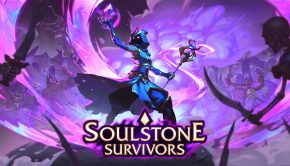Elex II PS5 Review – An ambitious open-world RPG you can’t sleep on
Summary: An ambitious sequel with a beautiful content-packed open-world, complex factions, and interesting choices to role-play your way.
4
Elex-ellent
Choice and consequence are some of my favourite aspects of role-playing games. When player freedom is blended with meaningful reactivity to in-game actions and decisions, you can bet I’m there to test those systems to the limit, and see how far the game shapes itself around the way I choose to play.
The original Elex catered to this preference of mine in spades, offering a vast open-world with several factions to join, choices to make and various endings to discover. Where its smaller budget showed, its sheer ambition soared far higher than triple-AAA titles.
Elex II plays to these strengths with an even bigger emphasis on choices, an expanded open-world, and better told story, with its commendable ambition stilted slightly by disappointing technical pitfalls.
Elex II is a third-person, action RPG built around a huge open-world map, with people and places that dynamically react and change according to dialogue choices and how you resolve quests. Set in an overwhelmingly detailed post-nuclear apocalypse world of Magalan, you play as Jax, a former military commander feared for his past as a ruthless member of the Albs, a race of unfeeling soldiers. Despite being hailed a hero for uniting Magalan against a threat from before the bombs fell, Jax’s efforts were undone as in-fighting resumed between Magalan’s factions. A new threat, the Skylands, invades the planet amidst the chaos, providing a convenient set up to once again have Jax start from the bottom, and re-integrate him into quarreling world affairs as a hero, or a hard-ass – based on your preference.
As a sequel, Elex II does a great job of introducing new players to the rich world of Magalan and Jax’s plight without requiring you to play the first game. Characters and loading screens regularly reference past events, but I found it was handled in an organic way that gradually establishes key story beats without overwhelming exposition dumps. When past events from the first game are brought up, you’re provided with dialogue options to ask more questions, or answer as a version of Jax that remembers, providing both newbies and returning fans a satisfying way to role-play.
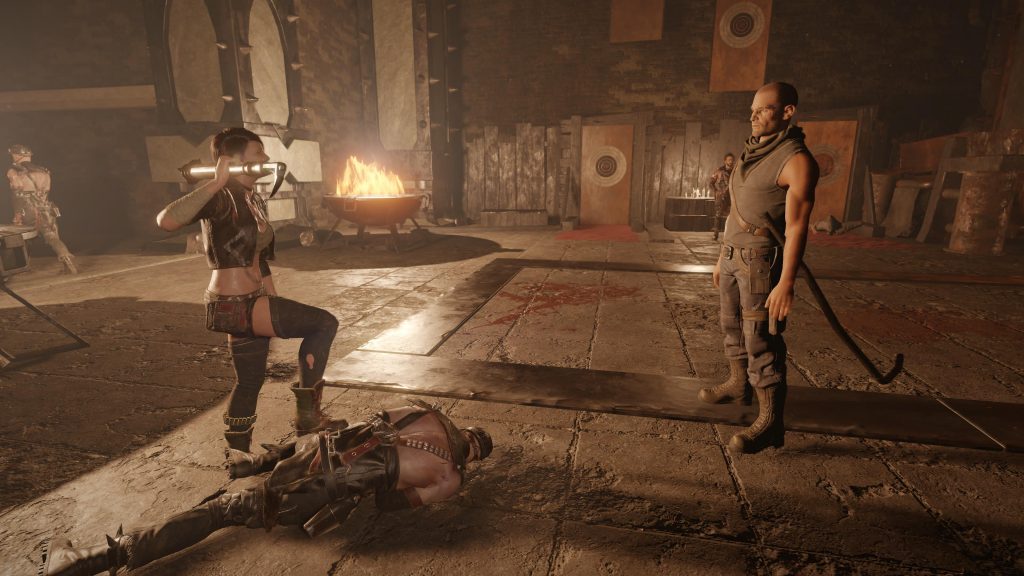
The game’s story is a definitive continuation of the first, however, and it’s great to see fan-favourite characters like Rat, Chloe, Hector and Nasty, how they fared over the years, and how Jax’s actions impacted them. Playing the first game also better contextualises your goal in the sequel, which is to unite all the factions again under a new banner, called the 6th Power, in your own settlement called the Bastion, your way with the allies you pick. There’s a lot of well thought out reasons as to why Jax still isn’t cozy with his old faction, such as the Outcasts now being led by series boogeyman Bloody Baxter, or the Clerics suffering from their losses in the last war. However, while the first game offered players a lot of choice over who they allied with and how the main story played out, the sequel establishes a concrete canon by referencing Jax’s choice with the Hybrid (he saved them) and reveals he had a son with companion Caja, who acts as a moral compass for Jax.
None of this limits the amount of choice you have in Elex II by the slightest, and there’s as much, if not more role-playing choice and opportunities than ever. You’re let loose into the open-world with nothing but a lead pipe, and you can pursue the main quest, or go in any direction you want to explore while ignoring the alien invasion story entirely. Dangerous wasteland monsters show no mercy and many can kill you in one or two hits, but it’s possible to make a beeline for the place or city you want to start with – exactly what I did after I rushed toward Crater City to join my favourite group of selfish losers, the Outcasts, where my curiosity is rewarded with better tools and dozens of questlines. You can even resolve quests in seemingly obscure ways if you choose to experiment; one seemingly impossible NPC fight resulted in a unique reward after I pushed through to see if it won. Developer Piranha Bytes have achieved wonders in catering to player freedom with a world that feels lived in; settlements bustle with activity, NPCs follow daily routines, and people react to your actions positively or negatively, and often violently – careful not to steal mindlessly like you would do in other games!
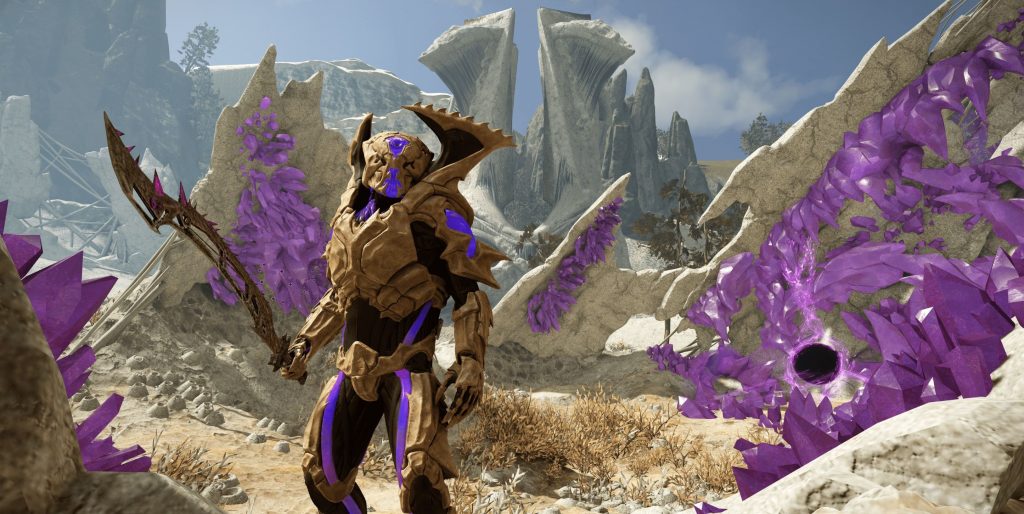
This leads to one of Elex’s biggest draw-cards – its faction system – and Elex II expands upon it significantly. There are five major factions in the game to join and each provides access to unique quests, weapons, armour, abilities and role-playing opportunities that dynamically affect how you interact with the world, and this time around there’s even an option to remain independent. All factions offer different ideals and playstyles, and the game makes it worth your while to experiment with each of their offerings before making a decision. The Berserkers, for instance, provide a classic ‘good-guy’ path with its magic-based skill-trees and medieval fantasy aesthetic, while the Albs are a high-tech, sci-fi coven that coldly answer threats with laser weaponry. Outlaws are Mad Max-esque anarchists with a penchant for drugs and a focus on profit, and Clerics are self-righteous tech hoarders. Newcomers the Morkons are a violent, isolated post-apocalyptic society that pray to a blood God and live underground. You can support, sabotage and choose whoever you like, and if you love choices in your RPG, things regularly come back to bite you in the ass both in the immediate and long-term. Oh, and they all also have special, cool-looking armour you can’t get without joining them!
The best part about the factions is the way they are all integrated into the world on a systems level, and how well they’re interconnected in terms of their quests and the overarching narrative. I aimed to join the Outlaws, who tasked me with infiltrating the Morkons to prove my loyalty, and found most quests allowed for three or more outcomes and often intertwined with other areas and NPCs, who reacted to my choices and affiliated faction consistently (such as refusing to help me for being a Morkon, or punishing me for lying).
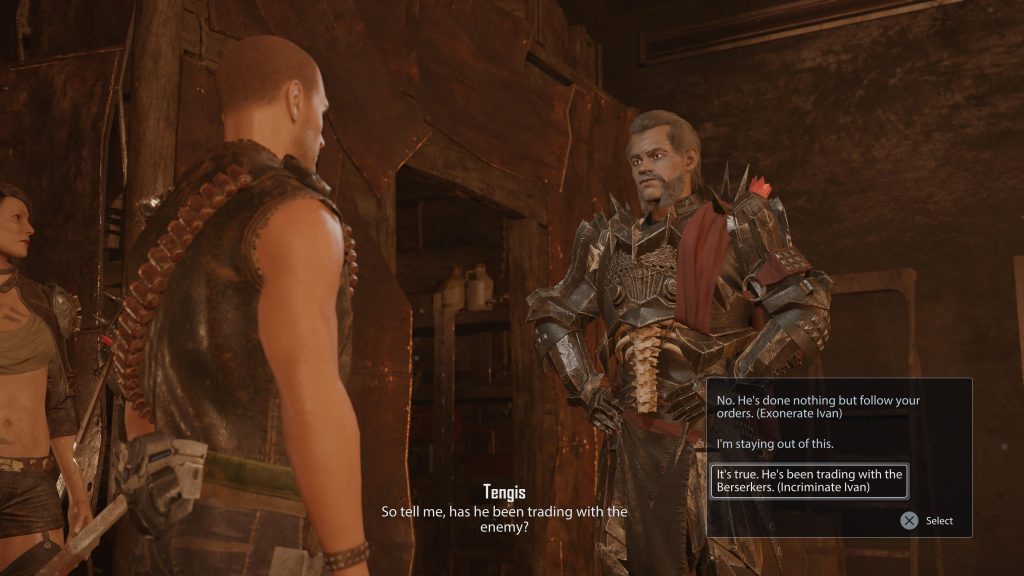
There’s a destruction meter that also measures your propensity for violence or altruistic outcomes (replacing Cold and Emotional from the first game) that come into play, too, and several companions you can recruit, who react to other faction NPCs, the world and your choices regularly, with an approval system to let you know if they’re on your side or not. I chose Outlaw-turned-Morkon Nasty, who loved my chaotic ‘screw everyone else’ approach, and Bully, the big but soft-hearted Outlaw forced to accompany Jax across Magaland, and I was amazed at the effort put into making them chime in during quests with opinions and outcomes unique to her personality and allegiances.
Companions now acknowledge other party members, and comment on each other’s differences during key conversations; one entertaining instance was the reunion with Nasty, where the conversation goes quite differently depending on if Caja is present, resulting in some hilariously catty extra dialogue. It’s the little details like this that go a long way into making every choice, including my choice of companions, feel special, and cater to future playthroughs that can feel vastly different.
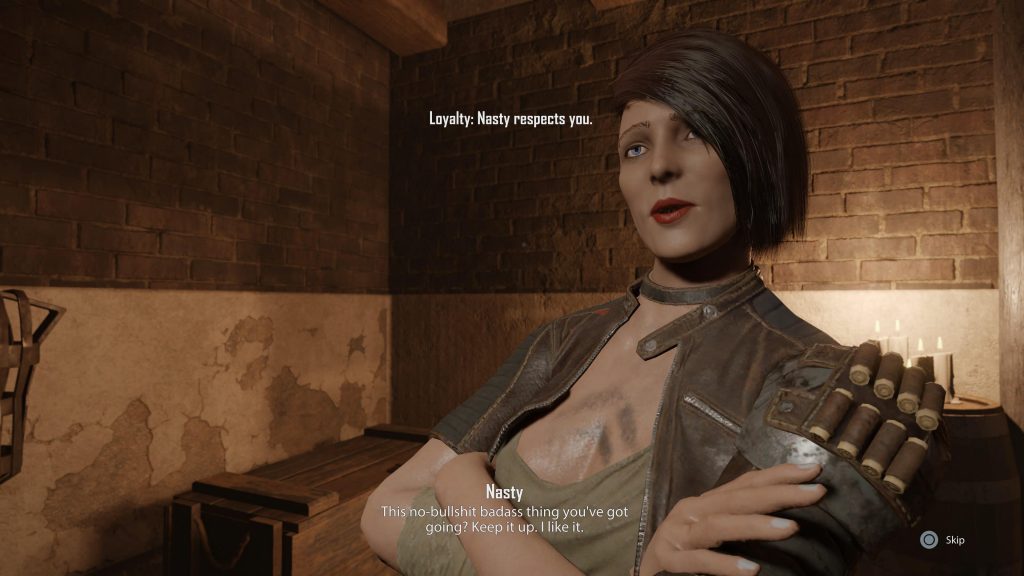
Of course, the factions and their complex societies would not be as compelling to integrate into without such a uniquely realised open-world, and Elex II’s Magalan is one packed with character. The game blends landscapes and themes that evoke medieval fantasy, post-apocalyptic wasteland and sci-fi horror all at once; you’ll come across Gothic castles, futuristic forts, run-down junkyard towns and subterranean cities all at once. It also means you have lots of different equipment to play with, such as swords, hammers, guns, potions, magic and more. Loot for crafting and selling and using is abundant, but special, useful items are carefully placed to reward thorough exploration. Interesting NPCs fill the land, each with their own stories and quests you can invest in, or end short to do whatever you prefer. I strongly advise you, though, to listen; there’s so many fun, hand-crafted stories, lore, hints and main and side quests from NPCs to discover that easily amount to over a 60+ hour playthrough.
The map of Magalan itself, in both scale and scope, is huge and content-rich, with a heap of hand-crafted areas, encounters and special items to discover that makes wandering around feel exciting and unpredictable. The game’s unique hook is Jax is equipped with a jet-pack (which is upgradeable), and this device allows you to traverse to hard-to-reach places, get pretty screenshots, and test the limits of exploring the world in ways that many other open-world games have failed to replicate.
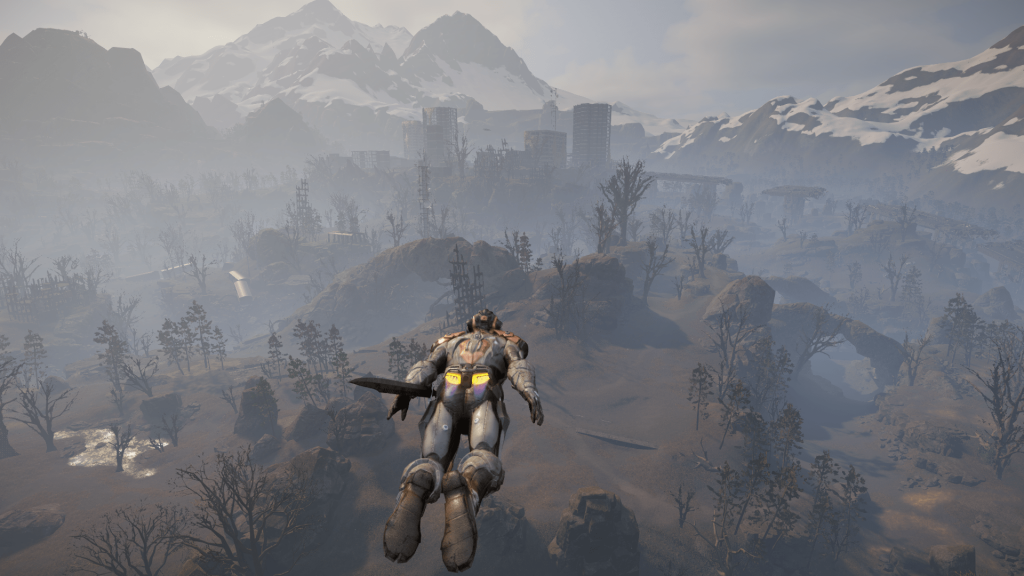
Players of the first game will recognise certain areas such as Tavar and the Fort, though both have changed significantly from desert wastelands into lush, green and healthy landscapes thanks to the Berserker’s efforts. The new areas of Ateris and Carakis provide a bevy of new locations and secrets to discover. All are filled with interesting enemies to fight, ranging from mutated monsters to terrifying aliens to opportunistic bandits to heavily-armed sci-fi soldiers ready to shoot you out of the sky.
That special pervading sense of achievement in role-playing the way you want, while slowly overcoming the difficulty and obstacles of the early game how you want, is intact from the first game (difficulty can be changed between five different levels for better accessibility). I was genuinely struggling for the first few hours with low-level gear and no money, and resorted to learning how to pick-pocket to purchase better fighting equipment, which then encouraged me to go all in on role-playing as an asshole who goes crawling back to the Outlaws for a better, more selfish life, eventually gaining enough Elexit to craft a powerful shotgun.
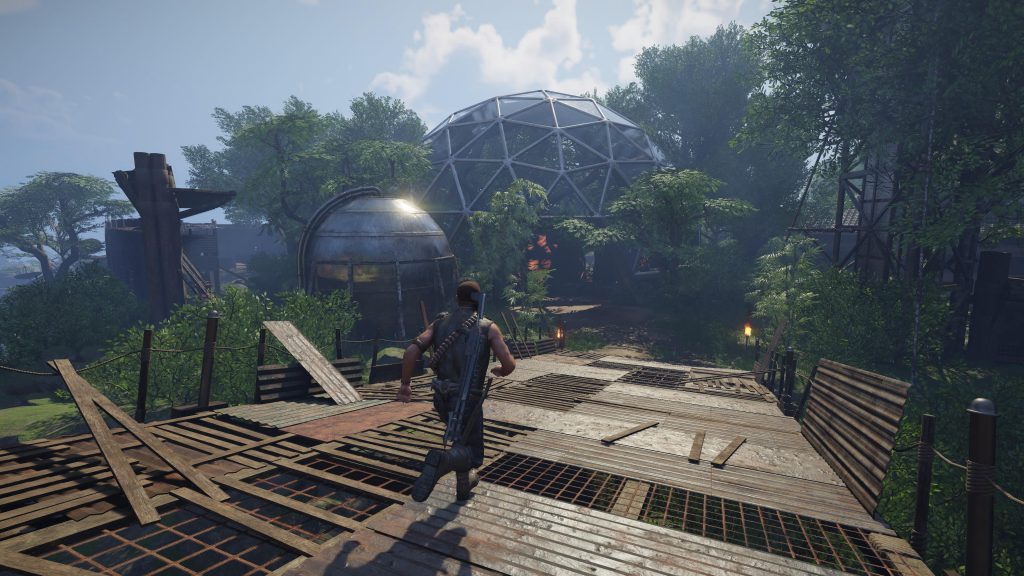
On a stats level, attributes, leveling and skill trees return with a few new twists, enabling you to specialise Jax as a sword fighter, back-stabber, gunslinger, fire-ball mage and more, with every choice having to be weighed carefully, as not every tree can be completed in one playthrough (at least, easily).
Unfortunately, some of the rougher parts remain, with little improvement in smoothness or polish. The combat system, and its melee and ranged-based fighting is still fast-paced and challenging, allowing you to chain light and heavy attacks governed by your stamina bar, or aim well-timed shots to gun down an aggressive enemy, but the animations and movement itself feel stiff and imprecise, leading to really ugly looking fights. Striking blows and shooting guns lack any sort of impactful feedback, and larger fights with multiple enemies often turn into repetitive, back-and-forth, clumsy dances. What made up for these moments was the diversity in weapons, and the many ways I could manipulate the environment and bring fights between other NPCs that made encounters dynamic.
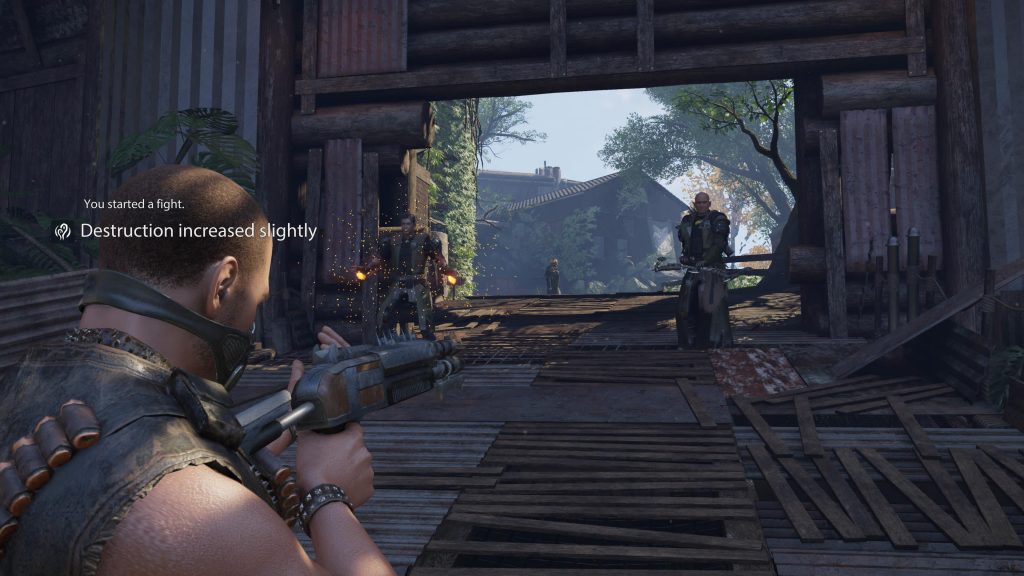
I had a lot of frustrations getting stuck in the environment due to the jump animation not working as intended, or getting locked in animation from multiple blows, and while combat and death in Elex is often, it rarely feels unfair save for these moments. Companion AI, meanwhile, is brain-dead, more a hindrance than help. To be clear, combat is still quite fun in a clunky, charming way, but if it’s what you look for first in an RPG, without the right mindset it will likely be a deal-breaker in your enjoyment.
Elex II also disappoints on a technical performance level, to the point where it can’t be ignored. I reviewed both the PS4 and PS5 versions of the game on a PlayStation 5, and found drawbacks for both. The last-gen version runs at 60fps via backwards compatibility on next-gen consoles, but lacks the additional detail in world and character detail, image quality, and textures of the PS5 version, which looks amazing, but suffers from an incredibly poor frame-rate that seemingly can’t maintain 60fps, dipping whenever exploring the busier parts of the content-rich open-world.
While all of this was not a deal-breaker for my experience, given I pushed on with the PS5 version and was engrossed by the sheer quality of the story, gameplay and role-playing elements, but it is a severe issue that players will need to be aware of until a future patch potentially improves performance.
The graphics and visuals, meanwhile, are a small step-up from the original Elex in terms of level design and environmental detail, but the character models are disappointingly last-gen looking, evoking memories of Fallout 4’s robotic walking, plastic-looking NPCs – especially in the sporadic cutscenes, some of which look worse than the rest of the game. The lip-syncing and voice-acting is decent enough to offset this, with the English dub proving fairly entertaining. The new voice actors for Jax, Nasty, Caja and company take a little getting used to, but it’s clear their lines were given more direction than the original game, resulting in far better consistency in quality of delivery. Shout-out to the guy that voices Bloody Baxter for the funniest self-deprecating demeanor and laughter in a game, and the woman that voices Nasty for embodying her ‘fuck-it’ attitude almost perfectly. There’s also some great dynamic lighting and denser detail in grass, blood and water on PS5, but frequent shadow flickering and a lack of interactivity leads to some undeniably immersion-breaking moments.
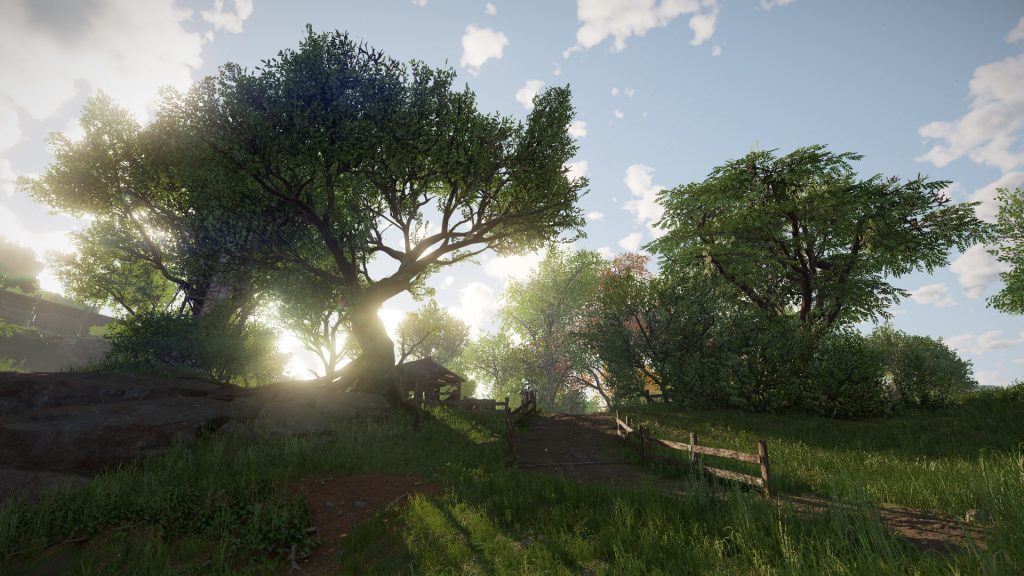
The Final Verdict
Elex II is an almost overwhelmingly ambitious and content-packed sequel that serves up more lands to explore, more people to interact with, and more choice and consequence to carefully consider.
It has unavoidable rough edges in the technical and graphical departments that, for many raised on highly polished triple-AAA titles, won’t be easy to overlook, but in terms of providing freedom and reactivity that makes for truly engaging role-playing opportunities, it is a fun, satisfying package that few titles can measure up to, proving budget isn’t the be-all, end-all for a great RPG experience.
Game Details
Primary Format – Games – Microsoft Windows, PlayStation 5, PlayStation 4, Xbox Series X | S, Xbox One
Game Genre – Action role-playing game
Rating – MA15+
Game Developer – Piranha Bytes
Game Publisher – THQ Nordic
